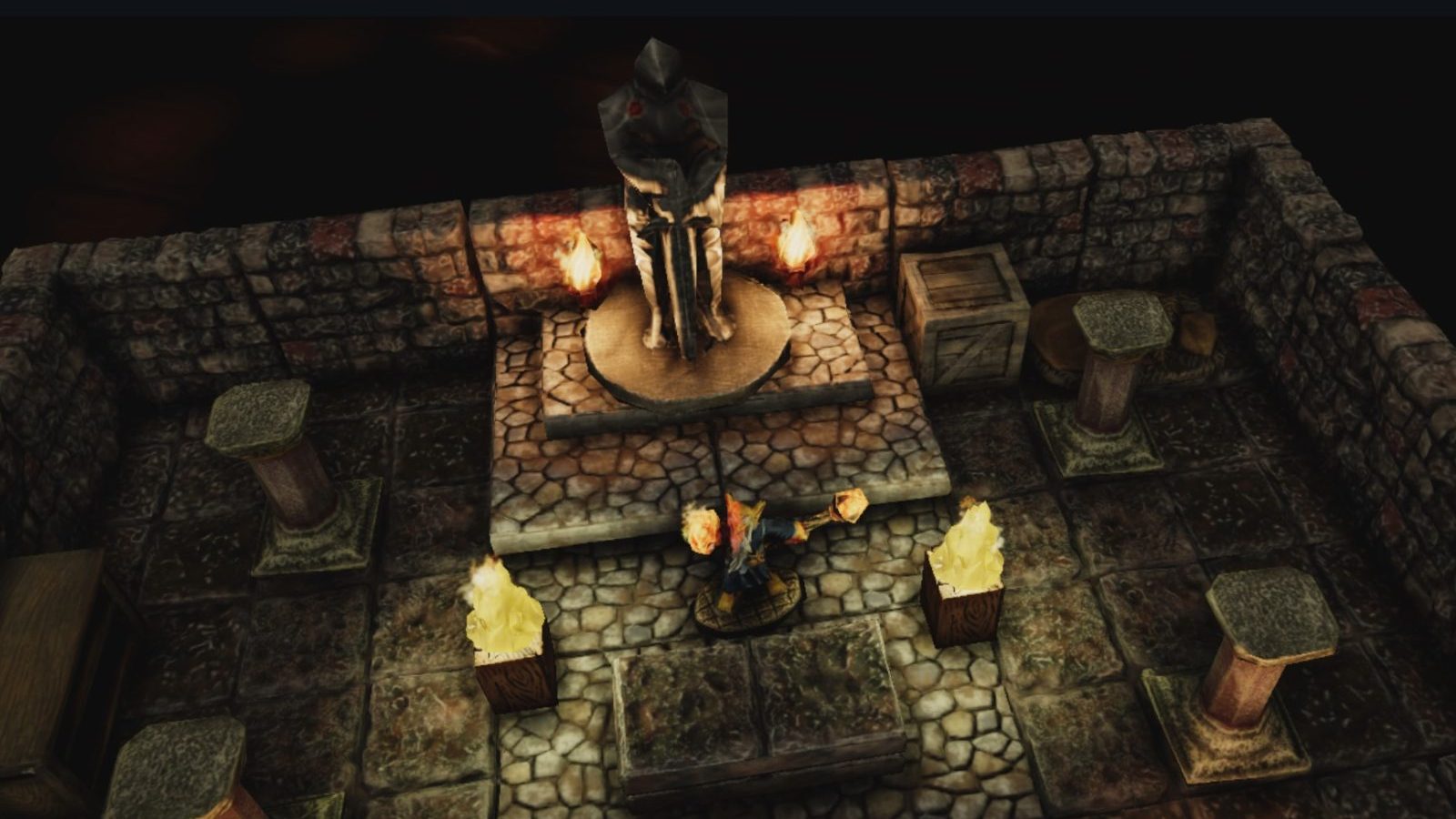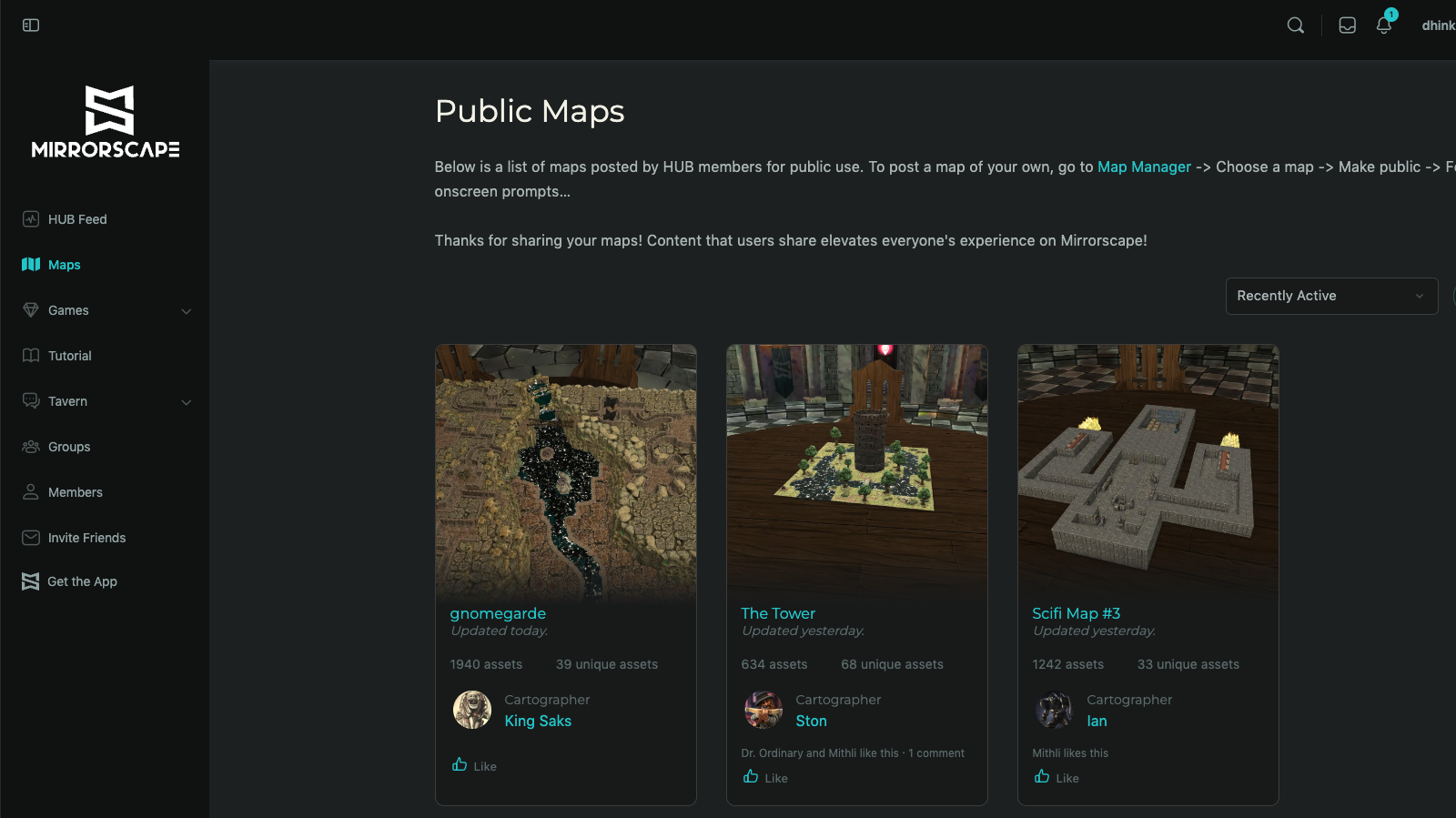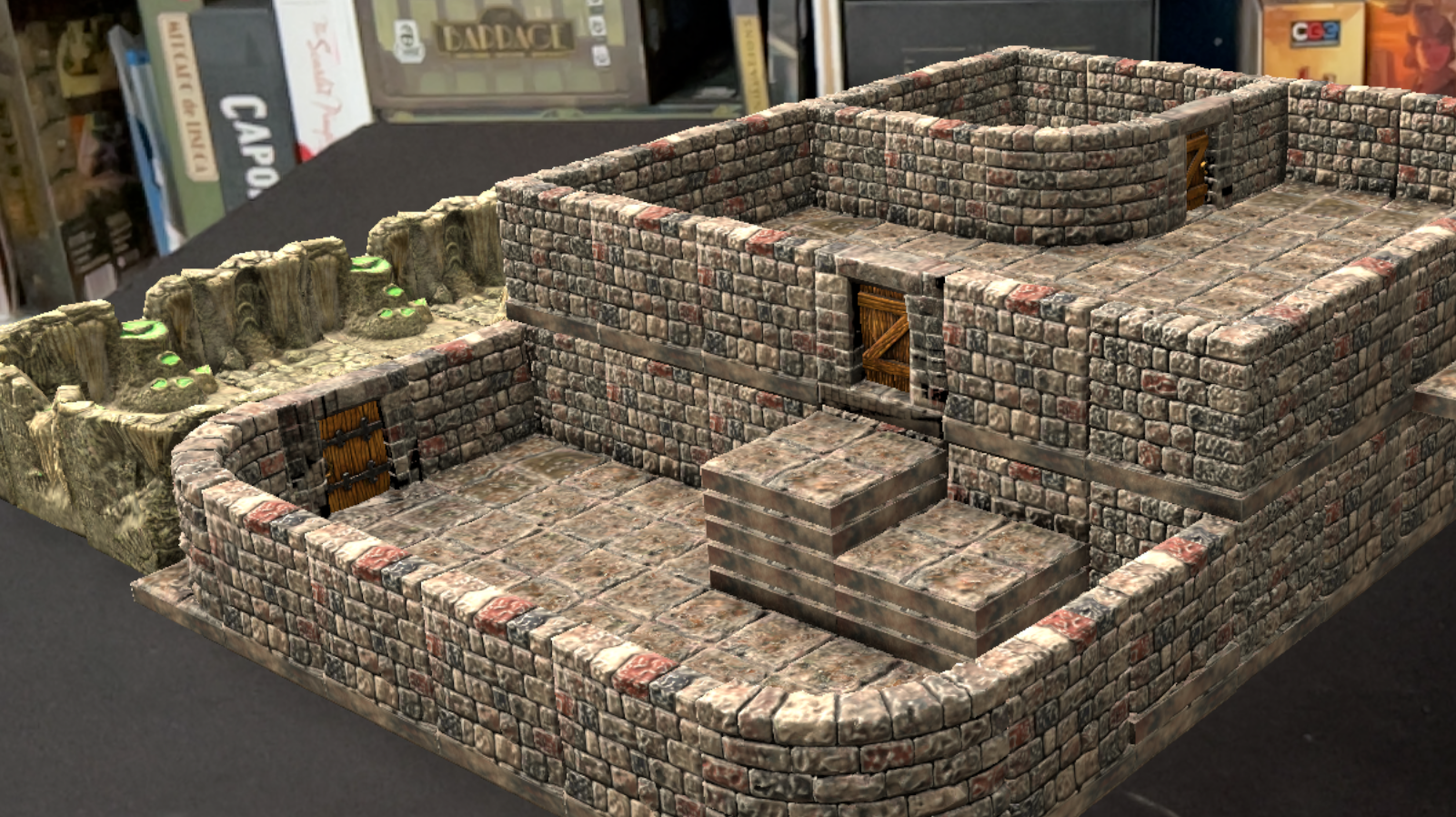
Recently, a team from GamingTrend was able to sit down and run through a Dungeons and Dragons one shot utilizing the new platform, Mirrorscape, which is currently in open beta. With three different lenses, we have provided three different perspectives on our experiences and what we thought of the platform.

Mirrorscape: The Company and the Product
Dan Hinkin – Lead Tabletop Editor

I didn’t get started in tabletop roleplaying until the pandemic. During that time, a friend of mine from the gym asked if I’d be interested in trying out a gaming system of his called Aliens and Asteroids. I bought my first pair of dice from my friendly local game store and sat down at my computer where I met most of this party for the first time. Over the course of the next year, we delved into a science fiction fantasy universe using theater of the mind, some clip art on an illustrator map, and even tried our hand at a few online platforms. While an awesome experience and a great entry into tabletop role playing, I felt online play was lacking and a bit clunky.
Enter Mirrorscape, a company based out of Los Angeles, attempting to bring an immersive 3D experience to the tabletop gaming world. Mirroscape was first introduced to the public through a kickstarter campaign in 2022 for a product called ARcana: Augmented Reality Program for TTRPGs. Mirrorscape eventually dropped the ARcana name and launched the app to the public using the company’s namesake after delivering to the backers in the summer of 2023. Mirrorscape also has an appreciable history in the industry. Its executives have spent time creating VR experiences, cinematography, 3D rendering, product distribution, production, and even have Joe Manganiello, Hollywood’s unofficial D&D expert and hype man, helping run the company.
User Interface

Currently, the product is available on Apple and Android mobile devices through an application. Since our playthrough, the company has also released a version of the product for Macs and PCs. Players must create a username which activates a 30 day free trial of the complete version of the product. The UI for the program is similar for both players and GMs, with a few different options depending on who is controlling the game. Players have options to add assets to the game board, change the room configuration, and change the settings which include preferences for manipulating the space and graphics. Players also have access to built in dice that they can roll across the board. The UI is meant for bigger devices such as tablets and computers, but the developers have plans to create a custom UI for mobile devices.
Characters

Characters in the app are assigned to different users in the game. The GM will have access to all characters. Clicking on a character gives players a list of options, allowing them to rotate the miniature, change the size, move the miniature, and even look through its eyes to see their point of view. GMs also have the ability to hide and unhide miniatures and other map assets on the board until they are ready to use them. Mirrorscape has a variety of miniatures preloaded into the system with basic figurines available to all. More can be purchased from the system and players can even import characters created using the Hero Forge program as well. The pricing for these components is less than what you might find in your local game store, but are only available in the digital space.
Map Building

Map Building is fairly simple in the platform, but definitely got an accessibility boost with the computer applications. Players can drag pieces onto the table and items will snap together to make bigger objects. Users can easily select, copy, and paste assets to make the process faster. One of the features that sticks out compared to the 2D counterparts is the ability to make different levels. When characters move to a new floor, rather than loading a new map, players can just adjust their vertical view and move their characters into the new level. Prepopulated maps are available through the online Mirrorscape Hub. Mirrorscape is working with top publishers, such as Paizo, to create digital maps for some of the pre-written boxed content, including the Pathfinder Beginner box and the Dungeons and Dragons: Lost Mines of Phandelver introductory pack.
Mirrorscape Hub

The hub is the online community group for the Mirrorscap platform. Players are able to share created maps which allows players to easily buy new assets from the Mirrorscape store. Players can also find games being hosted by GMs around the community to join. A couple of libraries house a number of tutorials on how to use the apps and some pregenerated characters for players to use in a campaign. Players can also join groups surrounding different topics such as different TTRPG systems and map building.
Asset Store

When creating an account, players will get a 30 day trial that includes all the assets currently available in the system and are given the opportunity to purchase used assets after the trial is over. Similar to other systems, Mirrorscape employs a credit system. Players can buy credits that they can spend on different character and map building assets. When loading prebuilt maps, a player can automatically buy the assets missing from their own library in one quick transaction. If you choose not to purchase the required assets, then the map will spawn without them, creating dead spots. Mirrorscape has made its own group of assets but has also worked with companies such as Dwarven Forge, Fat Dragon, and Reaper to create a variety of miniatures and terrain. Bundle packs are also available for purchase.
AR Mode

One of the features that we saw but did not not fully explore was the AR mode. Players can use their devices to cast the current map onto a play surface in front of them. By looking through the device screen, they can turn a coffee table, desk, or even their living room floor into a dungeon. Currently, the option feels a little superfluous, but could see some benefits down the road when integrated with VR goggles. The company is also developing AR glasses in collaboration with Qualcomm’s Snapdragon Spaces Pathfinder Program aiming to get devices out of players’ hands and give them that extra level of immersion.
Upcoming Additions
Along with established partnerships with Dwarven Forge, Hero Forge, Norse Foundry, Reaper, Fat Dragon Games, Death Saves, and Paizo, Mirrorscape is working with different companies to expand the usability of the product. Just recently, the company announced a new partnership with Kobold Press, an independent publisher of 5e adventures. The representatives mentioned expanded VR and AR glasses capabilities, adding animation to simulate the effects of traps, wind, water, and other immersive aspects, and even collaboration with a bluetooth dice company so players can roll their own physical dice to integrate with the application.
Gameplay

The gameplay experience of our one-shot was a lot of fun. After some beginner user errors, it was pretty easy to manipulate my miniature through the map. The maps felt much more immersive than their 2D counterparts and watching the map populate as the DM revealed more aspects was enjoyable to watch as it rendered on the table. The ambient glow of in-game fires and torches added depth and atmosphere to the forest and dungeon settings they illuminated. The GM was even able to change the level of the overall lighting to help give the illusion of darkness during the night and when entering a dungeon.
I used both an older iPad and newer Iphone during the playthrough which made it abundantly clear that this program needs newer devices to run smoothly. The new phone worked great, but ran into the screen size problems. The older iPad was lagging and couldn’t render the graphics fully, but I could see the benefit of a bigger screen. One of our other team was using an Android phone and there were some glitches throughout the gameplay.
Final Thoughts
As I was running through the one shot, I kept coming back to the question about who this product is for. For me, this is another opportunity to bring younger and more technologically savvy players to the table. I could see some of my middle school students eating up the map building element of the platform after growing up with products like Minecraft. This would have been something my group would have eaten up during the pandemic with addition of some space/industrial terrain added in.
I have hope for the future of Mirrorscape. Having a platform that helps get more people into the hobby is always going to be something to push for. As the company grows, I can see a lot of possibilities with the partnerships they can potentially secure. Including an extended trial to the program or including a prepopulated map in collaboration with a new Pathfinder story release, would pull people in and ultimately get more people interested in the platform. Mirrorscape is a young product with a lot of potential for growth. I, for one, will be following their progress and looking for how Mirrorscape grows towards the future.
You Already Know the Way
Sean Weeks – Tabletop Editor

Partway through springing a trap, Eric emphasized that spinning sawblades or a ker-chunk sound effect for spike traps were out of the question. He had a fog of war that hid tiles and a button for cycling between night and day—nothing a dimmer on a light switch or a TV table with pre-built dungeon tiles couldn’t do.
Mirrorscape’s lo-fi, and that’s because it wants to capture a flavor of roleplay that’s become more and more popular since the start of this century. Dungeon masters and miniature companies have forged a unique relationship. DMs glean racks of Nolzur’s, Wizkids, and Reaper minis for both the plastic and inspiration. Like the props in improv, the minis themselves function like story prompts. That’s an arrangement unique to this new generation of players, hypercharged by the personal 3D printer.
For that generation, Mirrorscape’s store provides a welcome, familiar experience. Different assets can snap together like legos and tiles or combine to make new ones. Our DM, Eric McIntire, revealed that a shrine I’d been admiring was really an ornate metal basin inserted into a stone altar. Models clipping into each other usually doesn’t count as a feature, but that sold me on it.

The app’s options were, at the time of writing, sparse, limited to under a dozen heroes and the more stock environments (taverns, caverns, and bugbears). That objection will melt away overnight. Mirrorscape has access to producers like Dwarven Forge and Reaper. Most of the work’s been done for them. The developers mentioned that they’re both rendering and scanning models, so many of them will be 1:1 recreations of physical content packs.
Soon, it’ll have at least enough content to match friendly local game stores and its price point will improve on the five dollar, two figurine blister pack. Nine dollars purchases 800 units of Mirrorscape’s in-app currency, ARCoin, and most miniatures cost 240-320 ARCoin, which places the average around three to four dollars. Reuse of figures for throwaway roles (e.g. city guards) and discounted bundles will lower that cost even more.
That could trigger some resentment from veteran DMs who’ve sunk money and shelf space into their physical collection. It could also be an opportunity for a player at the DM’s table to seize the initiative and buy into this cheaper alternative. Mirrorscape’s potential could be bigger than dine ‘n dash convenience or a solution for groups torn apart by migration. It could lower the barrier of entry to dungeon mastering in the style newer gamers desire.
Mirrorscape originally launched as “ARCana” and planned to synchronize its release with Facebook’s Meta Quest 3 headset. Due to a pandemic and the predictable delays which affect hi-tech development, that fell through and they put more energy into a highly accessible tablet experience, though Eric’s phone experience was a bit wonky and the devs plan to create a UI better suited for it.
The AR is . . . there. I was the only person who got a chance to try it. It was at odds with what I thought Mirrorscape was telling me: Why teach you how to play this game when you already know the way?
Mirrorscape: Does it really make you feel like you’re a PC?
Eric Deutsch – Tabletop Editor

I sat down at our Mirrorscape table without much prep outside of knowing that Mirrorscape was an attempt to make a virtual tabletop system that would deliver something novel. Typically, I have found theater of the mind and basic minis on a map to be satisfactory for my tabletop experiences, but I was excited to see how Mirrorscape would try to convert me. It delivered a theatrical session once we got past the normal roadbumps of trying out a new product.
At its core, we are talking about a virtual tabletop system-agnostic piece of software that is supposed to be immersive for players and GMs. The visuals were gorgeous. The mapmaking seemed intuitive, easy, and scalable – all of which are so important and the right things to be focusing on. GM versus player-control; fog-of-war; camera control of zoom, pan, and rotation; and pinging on the map all handled well for tablets. In short, the essentials of a VTT software were covered, hands down.
In addition to the basics, Mirrorscape promises integration with other applications such as Hero Forge. Even if Mirrorscape doesn’t have the exact character model you want to use, Hero Forge will have you covered. This is perfect for players and GMs who bring their characters to life online and want to use them in their virtual games too.
Moving on from the concept, let’s get into the nitty gritty details. The usability of the app varied widely based on device during our playtest. I, as the only Android phone user, struggled with screen size (mostly the balance of UI and visuals) and fine control of the product throughout. That experience is definitely taking a backseat to both the tablet and Apple product experience. At the time, the Mirrorscape team was working on their PC release which has since been launched. It is worth noting that the only bug on Android was identified earlier on the day we played and fixed within a week.

Dealing with smaller screen real estate is always going to be difficult no matter how much you focus on it. A lot of my time was spent zooming out to find the spot on the map, zooming in so that the points of interest were visible, and then using buttons that were great for accessibility but too large when trying to appreciate the map that our GM put together. Both of our tablet users’ experience was easier with only a little bit of a learning curve. And none of this touches on the VR experience that is on its way. It promises to expand upon many in app features, like the regular experience of seeing the world through your character’s eyes for line-of-sight. This feature is a little less impressive on a screen, but is a great idea which I’m looking forward to seeing fleshed out. It is unclear what the VR is going to bring for group play but it could have interesting applications for visual novels or other GM and single-player situations.
Our GM, Eric McIntire, was engaging and the session was fun. I had a lot of frustration with my phone, and wish that I had a tablet to try Mirrorscape out on. As mentioned before, other players’ experiences are not going to be the same and even other Android players will have a better experience using Mirrorscape going forward since the bug has been fixed. This product, as it was when we played, is cool and getting more features and polish as time progresses. I hope to experience Mirrorscape on PC one day.
